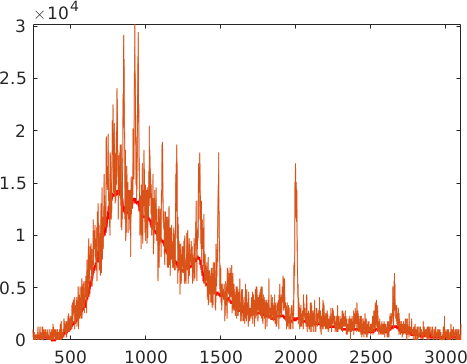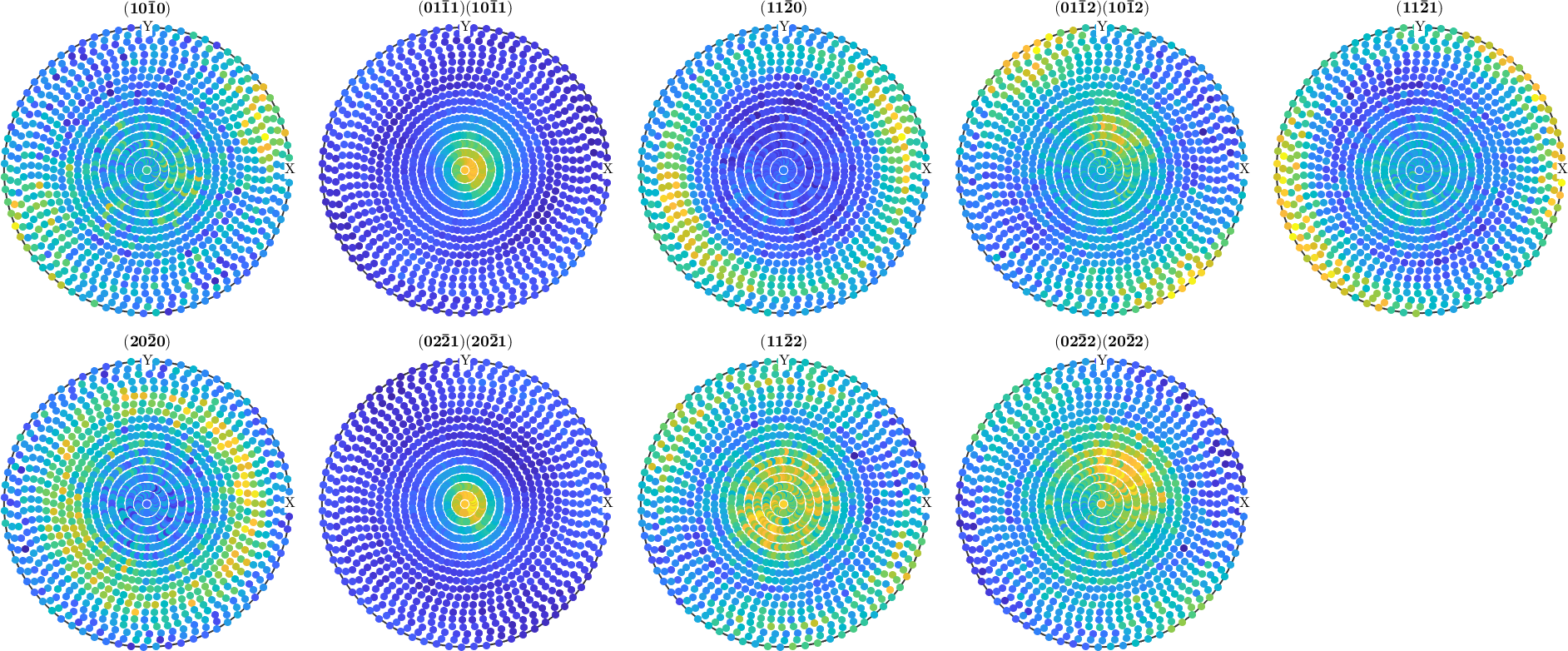This example demonstrates how to convert SKAT time of flight neutron intensities into pole figure intensities
Step 1: Import and Analyze the Spectra
% import all spectra
spec = loadallspectra(fullfile(mtexExamplePath,'ExODFReconstruction','Knie_10','Knie_10'));
% compute background
bg = calc_background(spec);
% plot
plot_spectra(spec,bg)load detector: a, b, c, d, e, f, g, h, i, j, k, l, m, n, o, p, q, r, s, .
calculate background: .
Step 2: Peak Detection and Integration
%Range fits measure period in '2005'
peakpos = [2520 1995 1480 1376 1354 1280 1206 1110];
peakrange = [[2509 2550];...
[1981 2009];...
[1470 1500];...
[1366 1390];...
[1344 1366];...
[1280 1295];...
[1196 1211];...
[1103 1117];...
[1015 1030]];
% specify crystal and specimen symmetry
CS = crystalSymmetry('-3m',[4.9,4.9,5.4]);
% file with structure factors for quartz
sf = txt2mat('quartz.txt');
%
sfpos = {1,[2 3],4,[5 6],7,8,[9,10],11,[13,14]};
for k = 1:length(sfpos)
i = sfpos{k};
h{k} = Miller(sf(i,2),sf(i,3),sf(i,4),sf(i,5),CS);
c{k} = sf(i,end).';
end
% extract peaks and calculate spectra sums
[sumdetectr,sumphi,sumspectr,peaks,peaksbg] = proceed_spectra(spec,bg,300:1200,peakrange);************
* quartz.txt
* read mode: auto
* 83 data lines analysed
* 0 header line(s)
* 12 data column(s)
* 0 string replacement(s)
************Step 3: Set up the Pole Figures
r = DubnaGrid(19);
pf = PoleFigure(h{1},r,fliplr(squeeze(peaks(1,:,:))),CS);
for k = 2:length(h)
pf({k}) = PoleFigure(h{k}.',r,fliplr(squeeze(peaks(k,:,:))),CS);
end
pf.c = c;
%plot(rotate(pf,rotation('axis',xvector,'angle',90*degree)))
plot(pf)